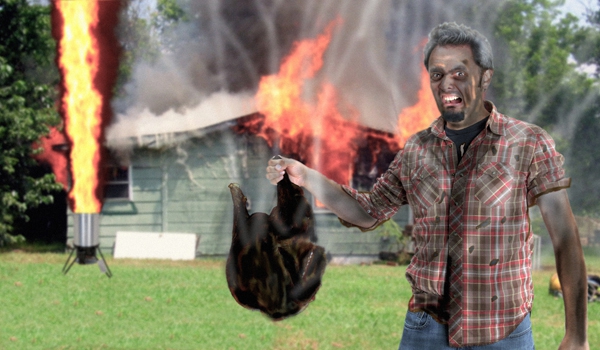 Hospital pharmacists often commit medication errors or miss doses because they are constantly interrupted or distracted. Recent studies show that interruptions, especially phone calls are increasing the risk of medication error. A recent article By Anthony J. Melanson, BS; and Marc R. Summerfield, RPh, MS published on The “Patient Safety and Quality Helthcare” website compiles the findings from recent studies covering this issue and provides recommendations to improve it.
Hospital pharmacists often commit medication errors or miss doses because they are constantly interrupted or distracted. Recent studies show that interruptions, especially phone calls are increasing the risk of medication error. A recent article By Anthony J. Melanson, BS; and Marc R. Summerfield, RPh, MS published on The “Patient Safety and Quality Helthcare” website compiles the findings from recent studies covering this issue and provides recommendations to improve it.
The Emergency Doctrine:A case against a young New York woman whose bikini top was untied by a prankster passenger was dismissed by the New York Appellate Division, 2nd Department in a fatal car accident that followed the incident
Brittany Lahm was held not liable for a car accident that killed one teen and injured several others in July 2008 while she was driving back from the beach with other teenager friends in the car. Brandon Berman, a 19 year old passenger, playfully untied her bikini top. She lost the control of the vehicle as she took her hands off the wheels to cover up. The car hit a guard rail and flipped killing Berman and injuring other passengers.
The Appellate Division citing The Emergency Doctrine held “that Brittany did not anticipate that Berman would suddenly pull the strings on her bikini top, thereby causing the top to fall and her breasts to be exposed” and that it constituted “a sudden and unforeseen emergency not of her own making.”
Read more in the New York Daily News
NEW YORK PRODUCT LIABILITY: PREPARATION OF THE PLAINTIFF’S CASE
By Anthony Gair
A. COST
Product liability cases are different from general negligence cases and even medical malpractice cases for several reasons. First and foremost is the cost involved in litigating these cases. The costs involved for the plaintiff’s attorney can be astronomical. It is not unusual to accumulate well over $100,000.00 in expenses prior to trial. Obviously, much more may be expended should the case proceed to trial. Thus, when you, as a plaintiff’s attorney, are considering the representation of an injured plaintiff, the first question that must be answered is whether it is worth the cost, time and resources that will have to be put into the prosecution of the case. It is suggested that, with some exceptions, a case not be undertaken unless it has a value in excess of seven figures. However, if you are dealing with a product with a documented manufacturing flaw or defect which you know has been previously litigated or recalled, the potential value of the case can be less. Similarly, in a design defect case, if there has been a product recall, the same applies. Further, if you have previously successfully litigated a case involving the same product there is no reason not to take it, even if it is not a seven figure case.
The plaintiff’s attorney must also understand that manufacturers are proud of their products and will not simply roll over and play dead. Many manufacturers have defense firms on retainer to handle cases brought against them throughout the country. These attorneys know the product involved, are generally highly experienced and have the best experts at their disposal in addition to the design engineers who designed the product. These national counsel have relationships with local attorneys who also have expertise in defending these cases.
Since most of the cases you will see are those involving alleged design defects and/or failure to warn this article will focus on those types of cases. It is suggested that if the only theory you can come up with is that of failure to warn, unless it is clear cut, you should be cautious about taking the case, since in New York culpable conduct is a defense to a Product Liability case. In practice, if you have a failure to warn case, you will usually have a design defect case as well.
B. TIME AND PUTTING IT TOGETHER
If you undertake to handle a product liability case, be prepared to spend a countless number of hours on it. Not only will you have to learn all there is about the particular product, as discussed further, you must learn the principles of safety design engineering. Similar to a medical malpractice case in which you must learn the area of medicine involved so as to effectively cross-examine the defendant doctors and their experts, the same is true as to the field of design engineering.
The most important first step is to choose the right expert or experts. Under no circumstances pick a generic expert, one that testifies in any type of case. It is imperative that you choose a case specific expert who has actually worked in the industry and will survive a Daubert/Frye preclusion motion.
Continue reading →
Thanksgiving Propane Fire Turkey Fryers are dangerous cooking appliances that can lead to serious burns and other personal injury as well as destruction of proprety

Severe burns and other personal injuries as well as destruction of property may result from improper use of gas-fueled turkey fryers that cook the bird in hot oil. These cooking appliances are very popular for Thanksgiving but they are not safe! The National Fire Protection Association (NFPA) discourages their use. The risk of oil spilling is significant and the resulting injuries can be severe.
If you still decide to use a Turkey Fryer you should be aware of some of the dangers you are facing:
- During the cooking hot oil can splash on your hands or face resulting in burn injuries
- The deep fryer stand can tip or collapse when the turkey is put in or taken out resulting in a major hot oil spill
- The temperature of the cooking oil is so high that even its vapors can ignite creating an additional risk of fire
- Deep fryers can not be used inside. Many fires have ignited when fryers were moved indoors or into a garage to keep the appliance out of the rain
- Bad weather such as snow and rain is an additional danger to deep frying. If the rain or the snow hits the oil it may splatter or turn to steam and result in burns. The same can happen if the turkey is put in the oil when not fully thawed
- Deep fryers use around five gallons of oil and if the turkey is dropped too quickly in it, the oil will splash and burn people close to the appliance.
The NFPA continues to believe that turkey fryers that use oil, as currently designed, are not suitable for acceptably safe use by even a well-informed and careful consumer.
Product Liability – Defective Car: Kia motors recalls 80,000 Sedona Minivans in the US
A defective suspension part in some Kia Sedona minivans can break and cause drivers to lose control of the vehicle.The National Highway Traffic Safety Administration says the lower control arms near the wheels can rust and break due to salt exposure. To fix this issue, Kia motors announced today that it is recalling 80,000 Sedona minivans sold in the US between 2006 and 2012. The defective part will be inspected and fixed for free starting next month.
Read more here
Racial profiling: No Launch party tonight for Barney’s and Jay Z Collaboration
Barney’s which is being investigated by the New York Attorney general’s office over accusations of racial profiling has cancelled tonight’s launch party for its promotional partnership with Jay Z.
Jay Z announced this week-end that he would keep his deal with Barney’s but that the terms of the deal had changed. Barney’s agreed that all proceeds would go to charity and that Jay’Z would be taking a leadership role in helping to solve the issue of racial profiling.
Read more in the New York Times
New York Car Accident: 16 year old girl in critical condition after being hit by a van while in a crosswalk
Yasmelin Iglesias suffered severe head trauma after being struck by a van in the crosswalk at 48th St. and Sixth Ave in Sunset Park, Brooklyn, New York. The 16 year old girl is undergoing surgery. She is in critical condition. The police are still investigating why the 29 year old driver of the Van ran over her.
Read more in the New York Daily News
Product Liability: the voluntary recall of some Medtronic guidewires has now been classified class I recall by the US FDA
Some defectives guidewires manufactured by Medtronic can cause serious injury or death. The voluntary recall initiated by Medtronic in October was recently classified as a Class I recall by the US FDA.
Guidewires are inserted in arteries to guide and place stents. Those being recalled have a coating that can break off and block a blood vessel.
Medtronic initiated the recall after four problems were reported including one patient who suffered cardiac arrest but was resuscitated according to WebMD
Medical Malpractice Prevention: new toolkit to help reduce Central Line-Associated Bloodstream Infections
 Central Line-Associated Bloodstream Infections (CLABSI) are often the result of medical malpractice. An estimated 250,000 CLABSIs occur every year in the US with 800,000 of them happening in the emergency room. More than 30,000 people die from CLABSI in the US every year. The CDC estimates that the yearly cost related to CLABSI is $1 billion.
Central Line-Associated Bloodstream Infections (CLABSI) are often the result of medical malpractice. An estimated 250,000 CLABSIs occur every year in the US with 800,000 of them happening in the emergency room. More than 30,000 people die from CLABSI in the US every year. The CDC estimates that the yearly cost related to CLABSI is $1 billion.
To prevent these infections, the Joint Commission Today released a very useful toolkit to supplement a previously published monograph entitled “Preventing Central Line-Associated Bloodstream Infections – A Global Challenge, A Global Perspective” . This document provides best practices and guidelines for healthcare professionals who insert and care for intravascular catheters and who are responsible for the surveillance, prevention, and control of infections in all healthcare settings.
Nursing home medication errors often lead to hospitalization and death
Medication errors in nursing homes are one of the most common types of medical malpractice. Lack of Physician involvement, lack of adequate staff and training are often the reason why significant medication errors are all too common in nursing homes.
Here is an link to an article and a video about medical errors in Michigan nursing homes but there is little doubt that this problem exists at a national level as well.
 New York Personal Injury Attorneys Blog
New York Personal Injury Attorneys Blog


